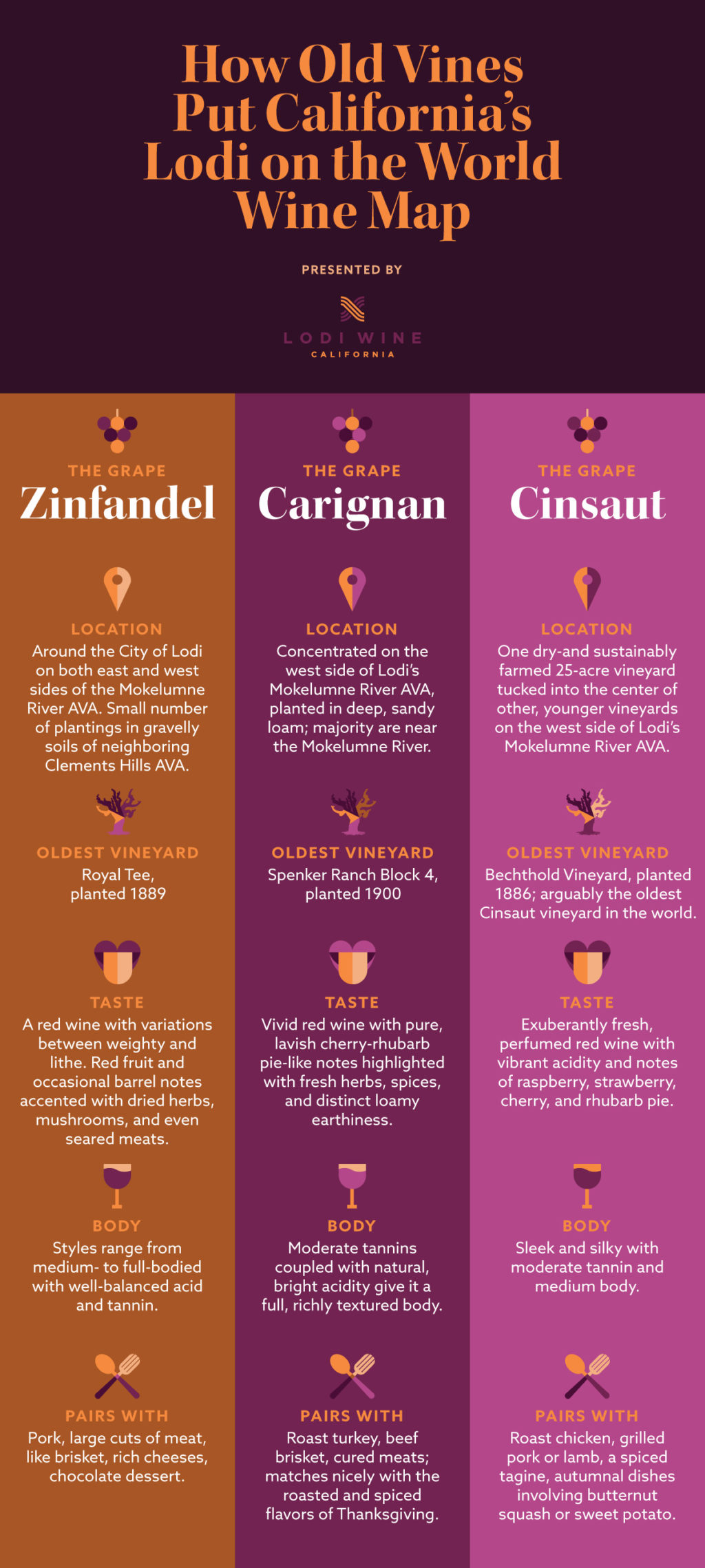At the San Joaquin-Sacramento River Delta’s edge, between San Francisco Bay and the Sierra Nevada Mountains, sit the lush vineyards of the Lodi wine appellation. A historic winegrowing region since the 1850s, Lodi has recently begun to gain recognition and acclaim, from wine lovers and historians alike, as the world’s most diverse and dynamic appellation.
When the first settlers arrived in the area now known as Lodi in 1846, they found lush grasslands and valley and blue oaks along with teeming wildlife. Surprisingly, they also found native grape varieties growing wild, dangling from the trees along the rivers traversing the region. By 1850, the first vineyard had taken root, and by the time the 1890s rolled around, grower and pioneer Captain Charles M. Weber — founder of the neighboring present-day city of Stockton — along with brothers George and William West and others were well on their way to populating the region with vineyards filled with more than 40 imported varieties.
Of those first varieties, it was Zinfandel and Flame Tokay — a versatile Algerian table grape with an eye-catching flame color — along with Carignan, Cinsaut (or Black Malvoisie), and a handful of others that took deepest root in soil and favor among growers and wine drinkers. During Prohibition, these varieties helped sustain Lodi’s grape-growing industry as growers found a booming market in shipping freight car after freight car to folks looking to try their hand at home winemaking.
Like some kind of unusual dwarf tree, gnarled, old, untrellised vineyards of many of these varieties still exist in the region today, most of them planted on their own rootstocks around the City of Lodi in the historic Mokelumne River AVA. Unfortunately, demand for Lodi’s venerable Tokay grapes vanished quickly during the mid-1980s and thousands of acres were removed. What precious few plantings exist today survive as front-yard heirlooms or ornamentals, if not left to grow wild and unkempt among patches of weeds.
There are many reasons these old vineyards have such longevity — one being place. Along with a classic Mediterranean climate, Lodi’s soils — specifically the deep, fine sandy loam (primarily in the Tokay Series) found in the Mokelumne River AVA — have contributed in large part to the preservation of these old vine vineyards. Inconducive to root louses like phylloxera and nemotodes, these well-draining soils allow the vines to slowly draw water down throughout the season, producing consistent and balanced growth and increasing aromatic intensity in the fruit, factors that make for intensely flavored, bold, and complex wines.
Equally influential to the perseverance of these old vineyards are Lodi’s growers. Long at the forefront of education, innovation, and technological advances in viticulture as well as sustainable practices (the region’s LODI RULES is the nation’s first third- party-certified sustainable winegrowing program), Lodi’s growers have cared for these old vineyards generation after generation. Due to their labor of love, Lodi is indisputably home to California’s highest concentration of own-rooted, gnarly old vineyards, a fact that is a source of great pride among the region’s people. Today, these vineyards are being sought out by winemakers in Lodi and across the state who are crafting vineyard-driven varietal wines of distinction; wines that, sip after sip, provide their drinkers with a rare taste of California’s rich viticultural history.
Here, three of Lodi’s most fascinating old varieties:
This article is sponsored by Lodi Wine.
![Heritage grapes, brought to the region during the Gold Rush, provide a rare and varied taste of the Old World right on the West Coast. How Old Vines Put California’s Lodi on the World Wine Map [INFOGRAPHIC]](https://vinepair.com/wp-content/uploads/2020/10/lodi_inforgraphic_card.jpg)

